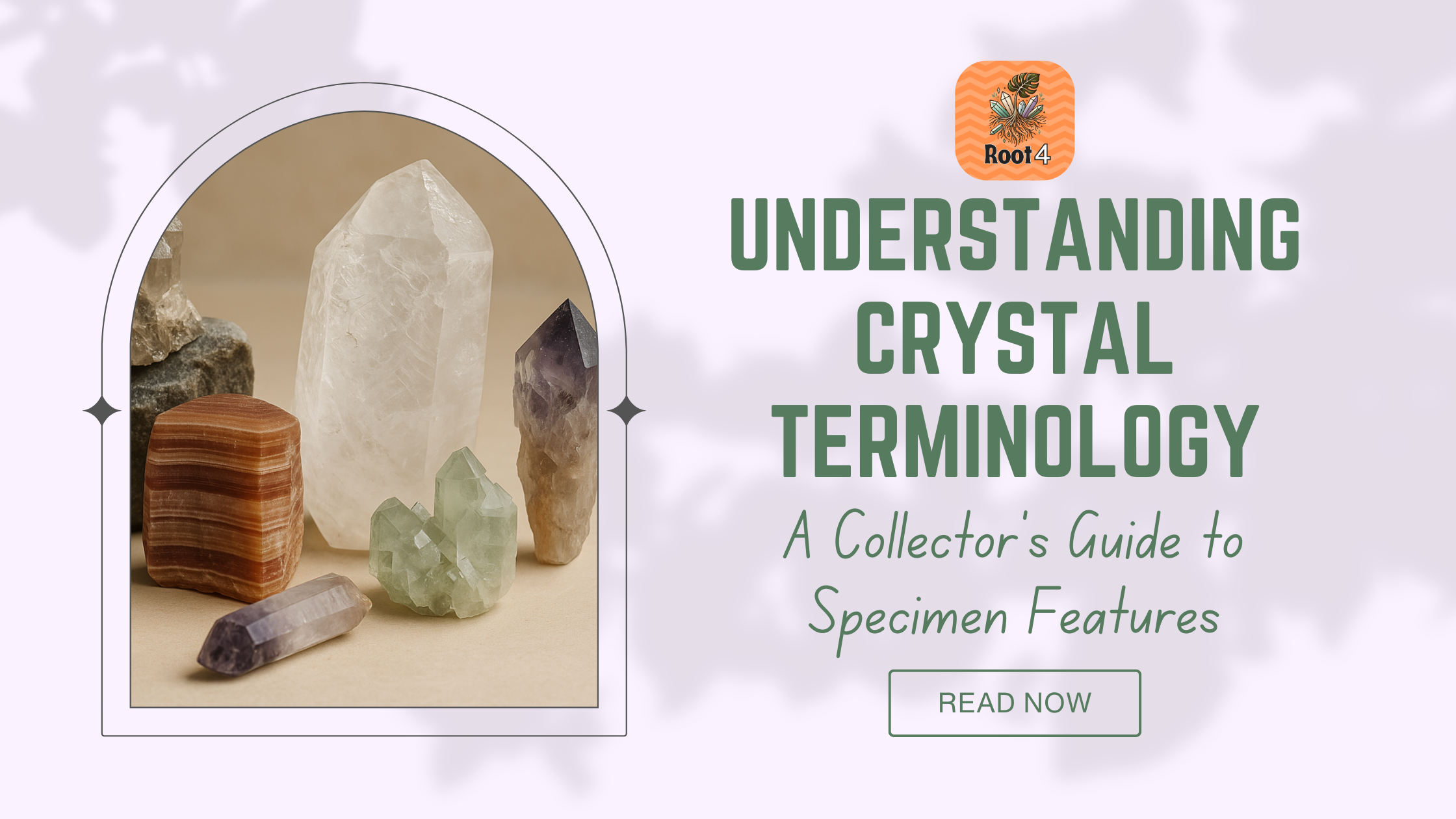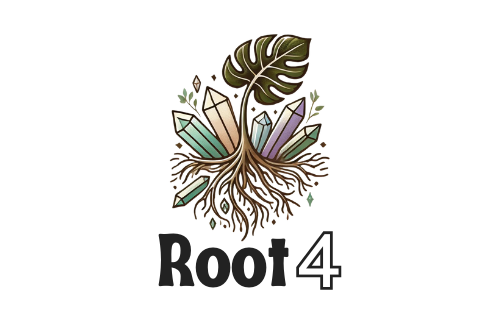Your cart is currently empty!

Understanding Crystal Terminology: A Collector’s Guide to Specimen Features
When it comes to crystals and minerals, there’s a whole vocabulary used by collectors to describe the fascinating ways these specimens form and evolve. Whether you’re browsing a gem show or building your collection, these terms can help you appreciate what makes each piece unique.
Crystal and mineral collectors often use a unique set of terms to describe the formations, features, and internal characteristics that make each specimen special. From double-terminated quartz points and phantom inclusions to etched surfaces and banded color patterns, these details offer clues about how a crystal formed and why it’s prized.
This blog post breaks down the most common terminology used in the collecting world, making it easier to identify and appreciate the distinct traits in your own collection. Learning this vocabulary helps deepen your understanding of each piece—not just as a pretty object, but as a record of natural history, geological conditions, and energetic symbolism.
At Root 4, we love helping people connect with the deeper story behind every stone. Use this guide to explore the hidden language of crystals and become a more confident, intentional collector.
Crystal Formations
Double Termination (DT)
A crystal with naturally formed points at both ends, showing it grew freely in a cavity without being attached to a matrix.
Tabular (Tabby)
Flat, broad crystals that are wider than they are thick—often slab-like in shape. Common in barite, aquamarine, and quartz.
Scepter
A larger crystal cap grows atop a thinner stalk, resembling a scepter. Formed when growth resumes after a pause, often in a different environment.
Cluster
Multiple crystals growing together from a shared base or matrix, often forming visually dramatic or decorative specimens.
Floater
A fully-formed crystal with no broken sides or matrix attachment—formed freely in space and often sculptural in shape.
Bridge Crystal
A smaller crystal that connects or grows between two other crystals, “bridging” them together.
Twinned Crystal
Two or more crystals that share a portion of their lattice, often growing in symmetrical intergrowth patterns.
Cathedral
A formation with multiple terminations rising from a central point, resembling the spires of a cathedral. Common in quartz and smoky quartz.
Surface & Growth Features
Keyed (Key Marks)
Indented impressions on a crystal’s surface where another crystal once grew—often rectangular or geometric.
Etched
Surface patterns formed by natural chemical processes—grooves, symbols, or layered markings that make each specimen unique.
Elestial (Jacaré / Alligator Quartz)
Crystals with layered, multi-terminated surfaces that resemble cascading steps or alligator skin.
Skeletal
Crystals with hollow or window-like growth areas, usually caused by rapid growth interruptions.
Growth Interference
Distorted or unusual shapes caused by surrounding minerals disrupting the crystal’s development.
Self-Healed / Rehealed
A crystal that broke and then resumed growth, forming new terminations or ridges over the damaged areas.
Banding
Visible layers or stripes of color caused by mineral deposition over time. Common in agates, fluorite, and rhodochrosite.
Natural Point vs. Cut Point
Natural points form during growth, while cut or polished points are shaped after extraction for aesthetic or energetic purposes.
Internal Features
Phantom
A “ghost” of an earlier crystal growth visible inside the crystal. Caused by a change in mineral content, then growth resuming.
Inclusion
Any material—gas, liquid, or mineral—trapped within a crystal during its formation.
In Hydro (Hydro-Included)
Crystals that contain water or liquid-filled bubbles within them. These inclusions are often visible and rare.
Rainbow
Internal fractures or inclusions reflect light to create flashes of rainbow colors when viewed from the right angle.
Faden
A crystal (often quartz) with a visible white thread running through it—showing how it regrew after being broken.
Manifestation Crystal
A fully formed smaller crystal completely enclosed within a larger one. Very rare and symbolically linked to inner potential.
Symbolic or Rare Traits
Record Keeper
Tiny, naturally formed triangles on a crystal face—usually quartz—thought to hold spiritual or ancient wisdom.
Penetrator (Inner Child)
One crystal partially embedded in or intersecting another. If fully enclosed, it may be considered a manifestation crystal.
Laser Wand
Long, narrow crystals with sharp tapering points and striations—used in energy work for focused intention or clearing.
Now that you’re familiar with some of the most common terms used to describe crystal and mineral specimens, we’d love to see what you’ve collected! Join our Facebook Group, Shiny Rocks and Leafy Thoughts, to share photos of your favorite pieces, ask questions, and connect with others who appreciate the beauty and stories behind each stone. Whether you’re showing off a rare formation or just found your first phantom quartz, we welcome collectors of all levels to join the conversation. 🌿💎

Leave a Reply